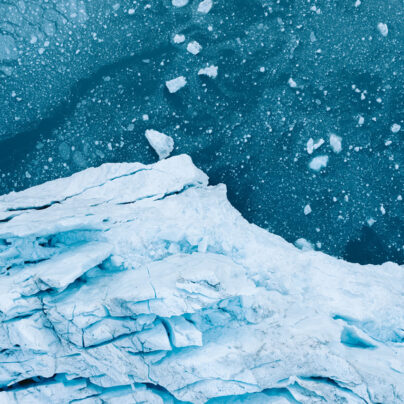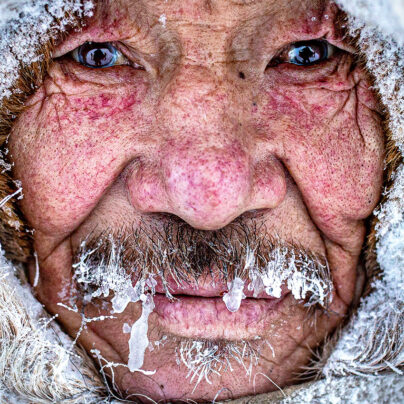Only Human
Bikepacking Kyrgyzstan in Winter
Ed Shoote
It’s pitch black as I sit sheltering from the wind and snow in a remote valley in Kyrgyzstan. I am keeping warm beside a crudely welded coal stove; my host, a herder living out here alone, just left to fire up an old diesel generator. The lights flicker on, dimming and rising rhythmically in sync with the hum of the engine. The door opens and closes in a burst of snow from the blizzard; he sits back down and quietly selects a DVD to put on the small TV in the corner. I am feeling a little out of my comfort zone, so isolated out here, but I relax and wait to see what’s on the TV. My relaxation is short lived.
‘A horror movie, seriously?’
Why has he picked this? A creepy, suspense-filled, Russian-dubbed gruesome murder-fest. I clock a shotgun sitting by the door, ready to fend off wolves as he sits in silence. I’m wide eyed and wondering if this was really a good idea.
The secret is getting out about Kyrgyzstan. Long known as the Switzerland of Central Asia to adventure travellers, it’s a beautiful place to visit in summer. However, I was intrigued by the idea of cycling here in winter. The romantic vision of steppes covered in virgin white, the steam from a flock of sheep closely packed for warmth as snow blows in the wind – these mental images had drawn me in, but the reality was tougher than I had imagined.
The capital, Bishkek, is a marvel of utilitarian Soviet-era architecture. I found it a bit bleak in summer let alone what now lies before me. The dirty snow extends onto the roads, and thick smog hugs the concrete apartment blocks. The Marshrutkas (shared minibuses) slip and slide in and out of the city; the riding is tough going. I contemplate just staying put in the empty but cheap hostel, but I soon pass the towers of the city’s main coal-fired power station, and I know the worst is behind me. To ride safely I am forced onto the icy hard shoulder; the clear tarmac road is too narrow and the drivers show no mercy.
This trip has filled me with fear from the beginning. I have explored Central Asia extensively before by bike but never in winter. I had decided to ride from north to south via the most beautiful route I could find. There was no information about which tracks and roads would be open and I had no idea if there would be village shops or even any people wintering in the mountains – it was all about trial and error.
I am on the open road with the mountains in my sights heading for the alpine lake of Song Kul via a 3,500m pass. Every person I meet tells me it’s impassable with a cross of the arms, but I’ve learnt that people’s perceptions of ‘passable’ vary, and I carry on. Riding at home, I overheat in a thermal and fleece on the coldest days, let alone double that with a down jacket on top; I guess the air to be around -20˚C as I prepare for my first night camping. As I light the stove and unpack, I become fascinated by the effect of the cold on my kit. The properties of man-made fabric change to crispy brittleness; the cheese I bought resembles that cheap rock-solid ice cream. As I wander over to the frozen river, the stars jump out at me. In winter the Milky Way is less dominant but the density and depth of stars astonishes me. I spot a planet and some meteors but it’s way too cold for stargazing.
The romantic vision of steppes covered in virgin white, the steam from a flock of sheep closely packed for warmth had drawn me in, but the reality was tougher than I had imagined.
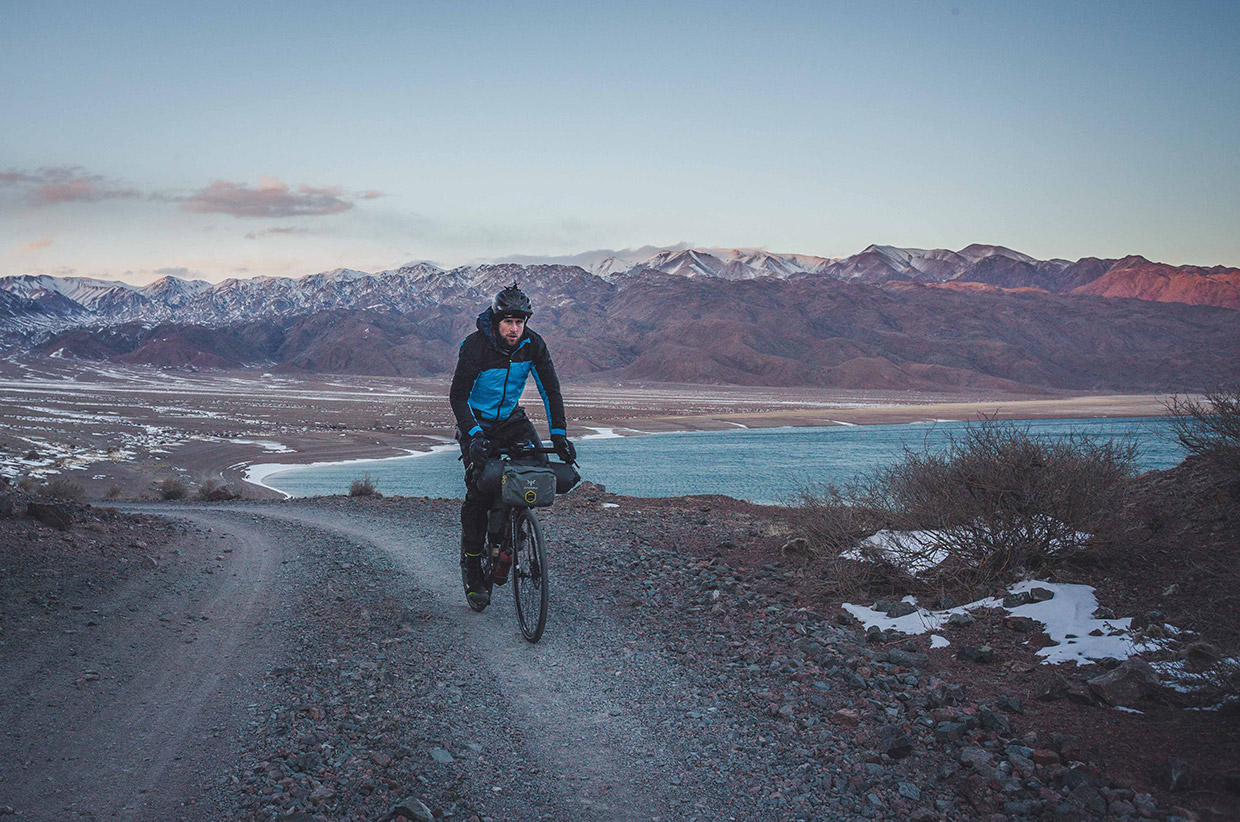
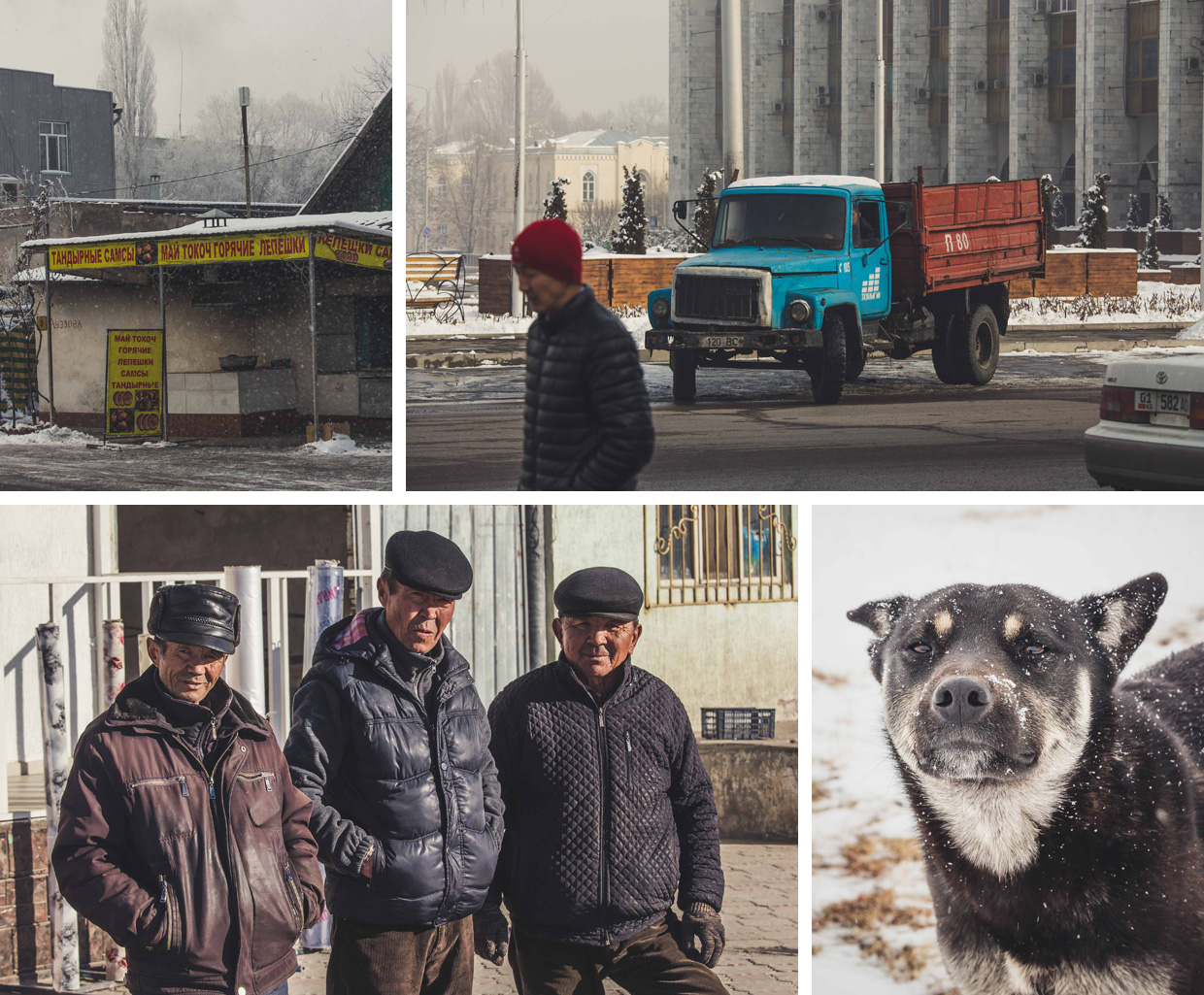

I awake to a tent so frozen in condensation it’s like an igloo’s interior. The ice on my sleeping bag refreezes rather than melting beneath the underwhelming morning sunshine. I am soon back on the bike, and carry on to Song Kul, passing angry dogs and friendly farmers in balaclavas. Finally the road is blocked with a bank of deep snow so I push and ride what I can. After three hours with little progress I contemplate that absolutely no-one goes to Song Kul in winter, so why am I? I have come here to meet people and understand how they survive, so surely this option is defeating the purpose. I turn back and head south on the gravel track.
It is -45˚C with wind chill as I descend into the dark. I don’t want to camp and the first house I eventually stagger up to has lights on. I get whisked inside; my frozen beard makes me look worse than I am.
The day is getting late as I reach the top of Dolon Pass and I realise the folly of my determination to reach the summit. To the south I find a landscape blanketed in deep snow, a sharp contrast to the cold but dry landscape I am leaving behind. As the sun sets I put everything on and hope it’s enough for the long descent. It is -45˚C with wind chill as I descend into the dark. I don’t want to camp and the first house I eventually stagger up to has lights on. I get whisked inside; my frozen beard makes me look worse than I am.
I am soon drinking kumiz, the infamous fermented horse milk, and recovering well. Although I felt warm enough, the skin on the tops of my toes dies a few days later. The next morning I have to fight the hospitality to leave again. The family have been so kind and it’s tragic to interpret, via stark sign language, that the two ladies are both widowed. I wonder if their cough and TB is to blame.
As I head nearer to China the mountains rise higher and the snow lies deeper. The steppes are just how I imagined, tufts of yellow grass sustaining the herds of horse and sheep. A pale white falcon I call the snow kestrel bobs alongside me for miles. Blue sky adds to the perfection of a crisp, cold winter’s day in central Asia. This is why I came here.
The road is quiet with a mix of ice and tarmac; in patches the black surface steams under the sun. I stop for chai in Naryn and am told I am the only cyclist they have ever seen here in winter. I smile, but I’m beginning to understand why that might be.
After Naryn I head on gravel roads to a remote valley, and the farthest south towards China I’ll manage without a permit. The next morning I get raided by the ‘Kyrgyz Anti Terrorism Team’, AKA the slightly bored local undercover police. After some fun and games in which they wind me up by looking for ‘MI6’ in my mobile phone, I am finally free to re-pack and ride off. I stock up in the market and realise the issue with fruit stalls here; the fruit is either frozen, or defrosted and mushy; still, a fresh orange holds off the scurvy from a mostly carb-based diet. Many people I stay with only have bread and tea. UN figures say 58% live in extreme poverty here, and I can only hope my spending a little currency has helped in a small way.


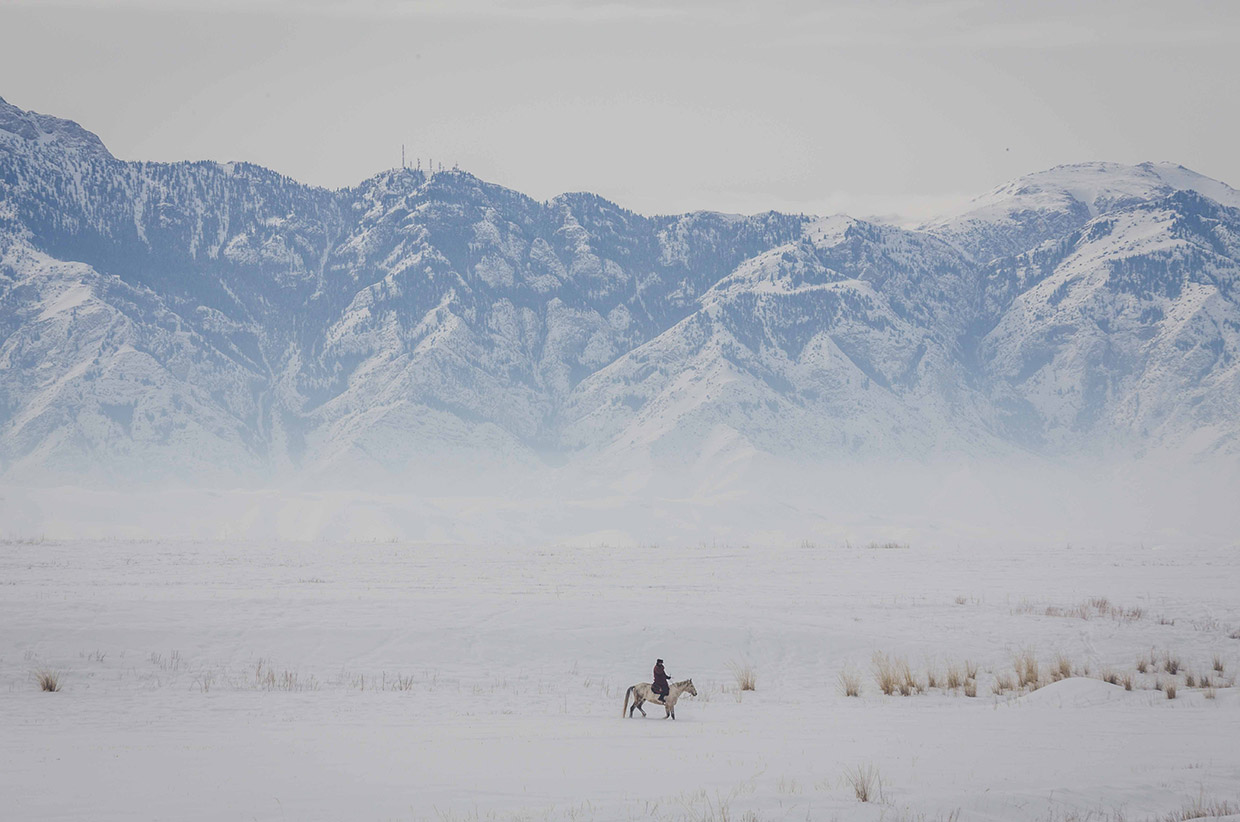
The track is mesmerising in the stormy weather. Shards of rock pierce the snow-dusted landscape. The yaks are sheltering and the track is getting harder to follow. I finally see the domed roof of the ancient caravanserai contrasting in white against the dark stone walls. Completely alone, I untwist the wire holding the doors closed and walk inside. The skylights are open holes and fine white snow elegantly falls in the shafts of light.
I am hit by a uniquely vivid sense of history. Its exact origins are unknown – maybe a converted ancient monastery – but in this peaceful setting I can imagine all the travellers since the 15th century who have also welcomed this refuge from the winter elements. Most were on journeys much longer than mine, and they would have found this cavernous hostelry with a fire roaring and the hustle and bustle of camels and traders on the snowy silk road.
I hope to sleep here, but I soon have company; this is where I meet the quiet farmer with a penchant for horror movies. I survive that interesting night and am rewarded by a return to sunshine and blue skies. I help feed his sheep before heading off via the long way back to Naryn.
The final descent of a long day sees me hacking ice off the bike just to let the wheels turn. I have been coughing, and the air hits me with every breath. Finally I cough up phlegm the size of a small grape. The ice-covered roads have been dangerous but I fear my downfall might be pneumonia. I sleep in a hotel in Naryn to rest, where I also meet the second of two English speakers, but I don’t improve so I hitchhike north to Bishkek. It takes me three weeks to fully recover.
***
The landscape, the conditions, and the extreme poverty of this area of Kyrgyzstan combined to make this a vivid experience of the harshness of living here in winter. While the route was amazing, the snow-bound gravel tracks limited my options, and the icy roads – with carefree drivers – frankly terrified me at times (and this comes from a regular cyclist in Central Asia). However, there were days when I sang songs while riding in the sunshine and marvelled at the astonishing winter beauty. I don’t regret my trip for a second, but sometimes we think our fitness and perseverance are invincible whatever the conditions. They aren’t – we’re all only human, after all.
Ed Shoote is a part time photographer, speaker and writer focusing on bikepacking adventures to remote places. Now based in the Scottish borders after a decade on the road he is still exploring new places close and far away from home.
Website: welovemountains.net
Instagram: @1lovemountains
Facebook: /1lovemountains


